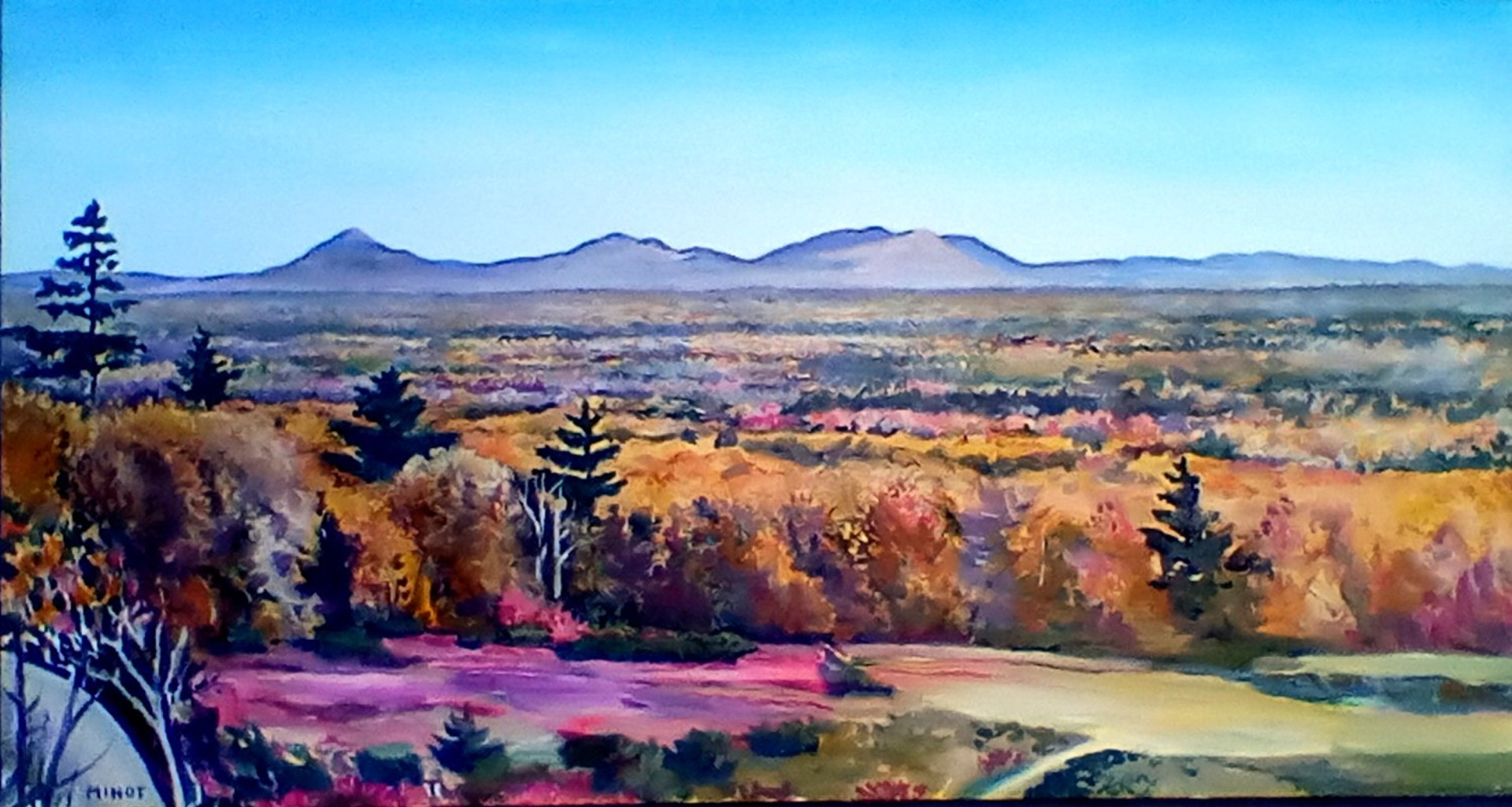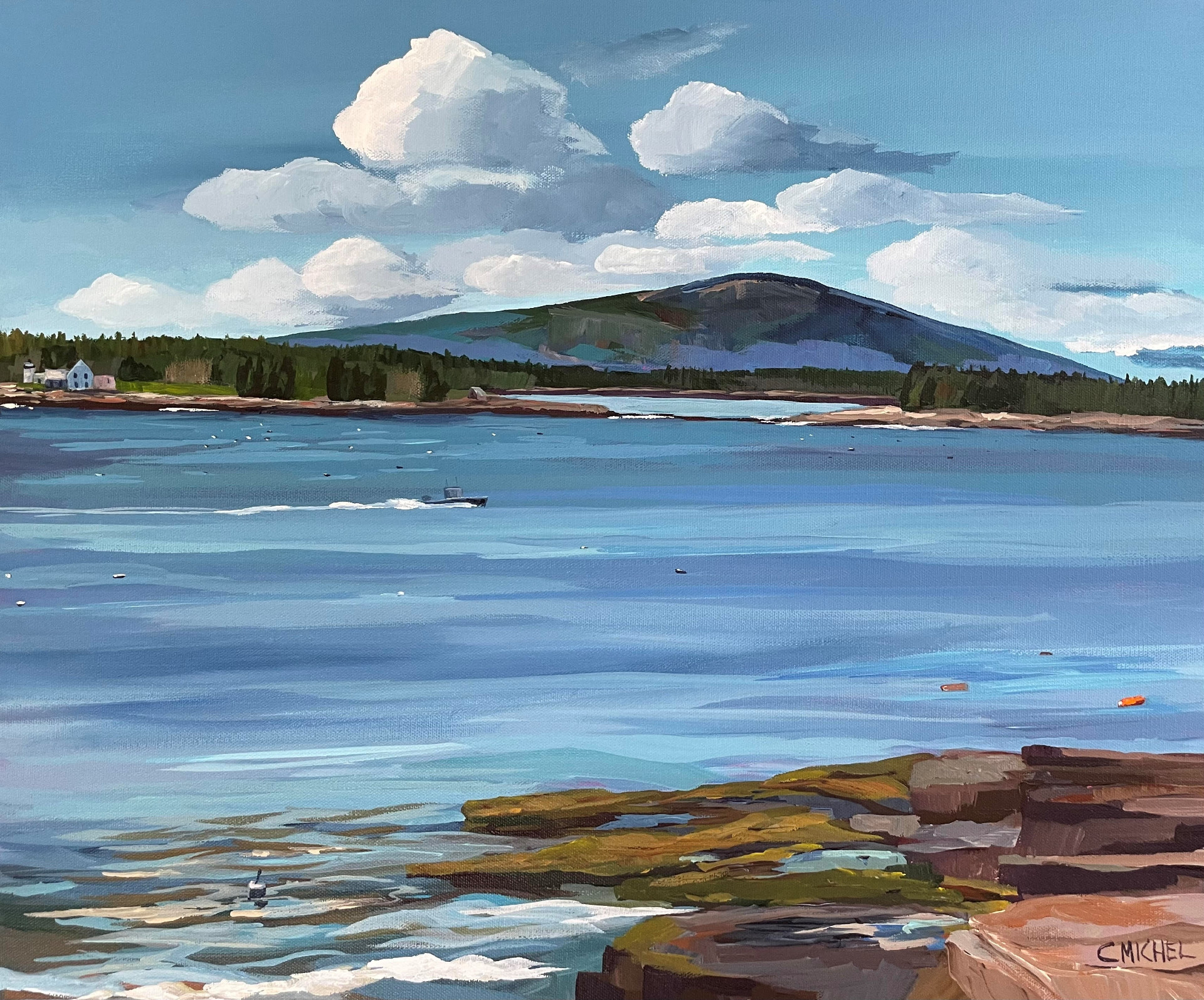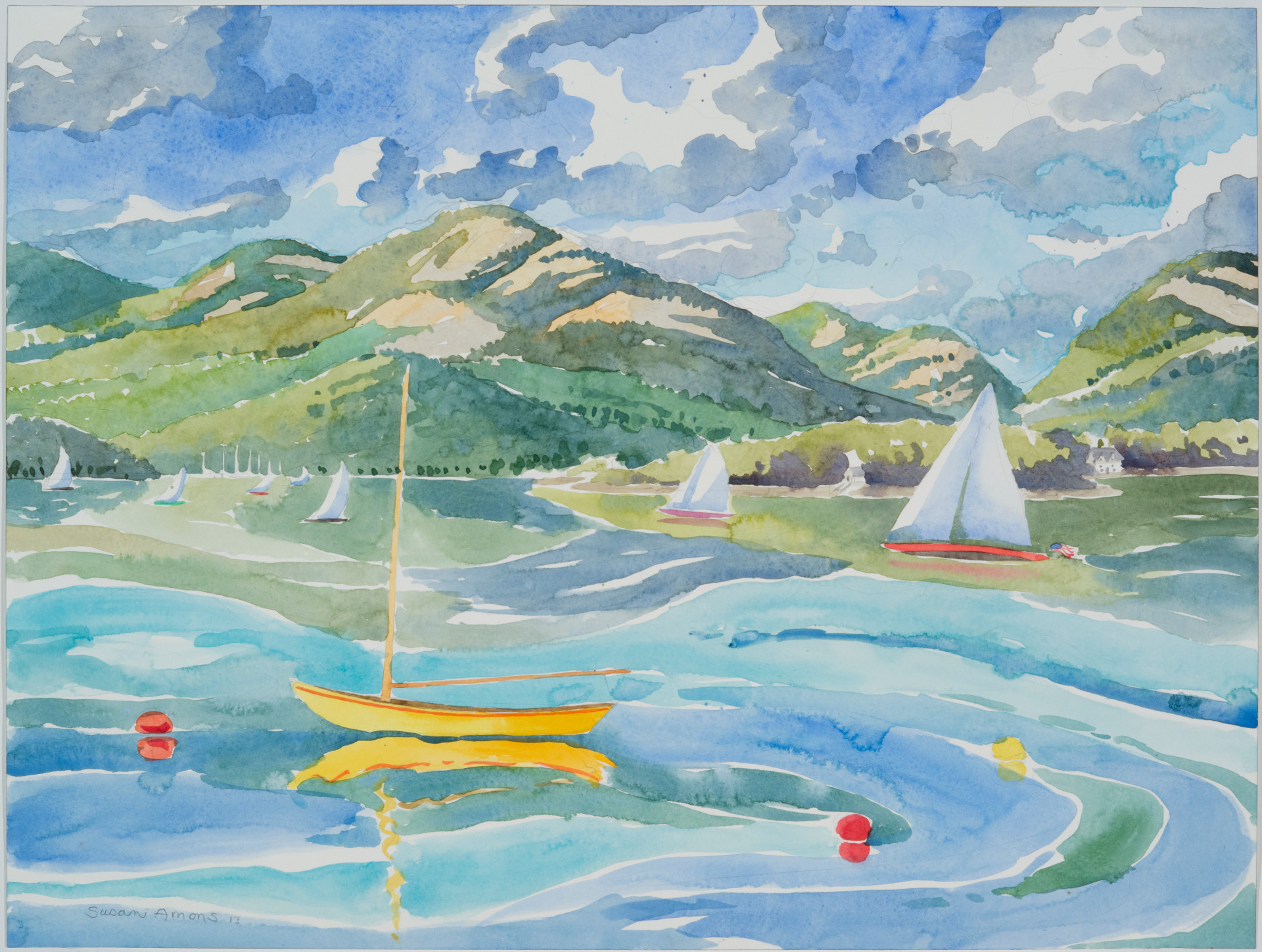Three Painters Bridge the Distance
October 25th, 2023
October 25th, 2023
BY CARL LITTLE
When you are in Acadia National Park, you get glimpses of its grandeur from the road, the hiking trails, the summits. Eagle Lake flashes by, the Western Mountains rise beyond Bass Harbor Marsh, the Porcupine Islands form a bristling armada in Frenchman Bay. There is beauty everywhere at every turn.
That said, it can be argued that some of the finest views of the park are found from afar. Folks in Blue Hill, Surry, and even further south look northwards toward a dream-like range of mountains; Schoodic Peninsula residents relish the over-the-water sight of Cadillac; and Cranberry Islanders brag about their “million-dollar views.”
Many a painter has been compelled to take up the brush in these off-island places. Indeed, for some artists, distance makes the paint grow stronger.

Sam Minot, Schoodic from Blue Hill, 2004, oil on linen, 16 by 34 inches
A year-round resident of Bucksport, Sam Minot is always ready to travel to find a view to paint. His eyes often range toward Acadia.
On a mild mid-October day in 2004, Minot found a perch off the path that climbs Blue Hill Mountain and proceeded to paint the autumn vista. He had previously worked from this spot, but this was the first time he looked easterly toward Schoodic.
“With the fall foliage below,” Minot recounts, “the view opened up to the far-off profile of Schoodic Mountain.” He painted for a couple of hours then brought the painting home to complete in the studio.
For good reason, the painter explains: “Keeping one’s wet oil-painted canvas free from debris, bugs, or smudges while transporting is a challenge.” He has also had paintings swept off by a stiff wind, “airborne like a kite—and ruined.”
No such problem on that fall day on Blue Hill Mountain. Beneath a pale blue sky, Minot created a vibrant vista.

Caren-Marie Michel, Cadillac from the Schoodic Loop Road 3, 2023, acrylic on canvas, 20 by 24 inches. Photo courtesy Littlefield Gallery
On a seemingly rare sunny day this past August, Caren-Marie Michel returned to a favorite outlook on Schoodic. “We are lucky to have a scenic pull-off here,” she writes, about the spot from which she painted Cadillac from the Schoodic Loop Road 3. The back of her car—her portable studio—provided shelter from sun and wind.
The painting features the Winter Harbor Light on Mark Island, with Ned and Turtle islands helping to frame the view of Acadia. A lobsterboat makes its way across Mount Desert Narrows.
As it’s a public spot, Michel talked with a number of passersby while applying paint to canvas. “I’m used to that,” she reports, having taught landscape painting and done many demonstrations.
The Westbrook-based artist has been visiting Schoodic since 2015. She prefers being on location over working from photographs. What is more, she appreciates the pressure of time: to finish the painting before the light and scene completely change.
Michel also simply loves being outdoors.

Susan Amons, Acadian Harbor, Yellow Hereshoff, 2013, watercolor, 18 by 24 inches. Photo courtesy of the artist and Courthouse Gallery Fine Art
Biddeford resident Susan Amons loves color—it’s the most important element in her work—and watercolor offers the most direct application.
Amons turned to watercolor during her residency at the Heliker-LaHotan Foundation on Great Cranberry Island in 2013. She began to think about subjects on the mailboat crossing from Northeast Harbor. Towering cumulous clouds hovered in a cobalt sky and brisk winds drove sailboats across the water, bright against the dark sea. It was, she recalls, one of the most beautiful places she had ever seen.
Amons tries to paint a scene on her first go, to keep it fresh. Later, she will add or darken some colors in the studio and try not to overwork it. Acadian Harbor, Yellow Hereshoff was painted from the island’s town dock, the sailboat placed in the picture last.
“Great Cranberry Island is a painter’s paradise,” writes Amons. Her challenge was to bring that “awesome beauty” back to the studio and transition from watercolors to printer’s inks (she is best known as a printmaker). Her Acadia artwork testifies to her success.
Here, then, is the lay of the island: a world surrounded by water, spreading across the sky, sublime yet grounded, manifold and magnificent, where the artist feels at once at home and away—Acadia.
Carl and David Little’s “Art of Acadia” came out in paperback this year. Their “Art of Penobscot Bay” is forthcoming from Islandport Press.